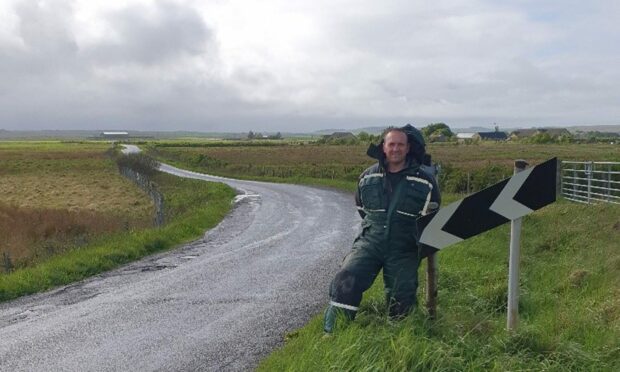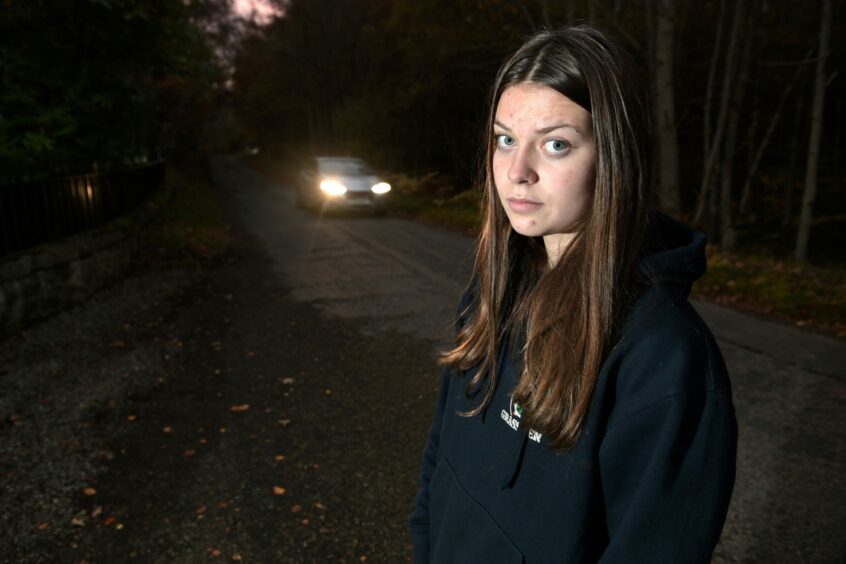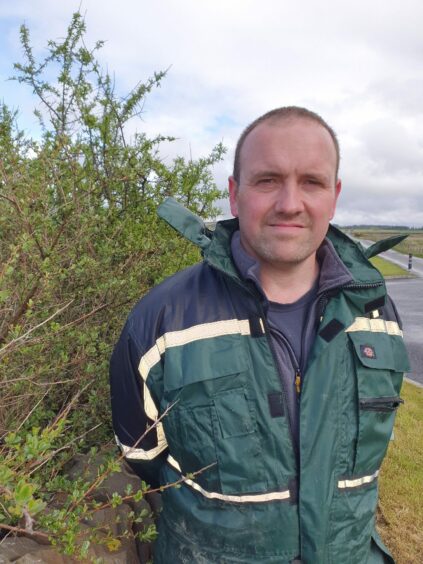Our story on the Caithness dad pushing for better school transport sparked a furious debate online.
Innes Sutherland slammed Highland Council for leaving his 12-year-old to walk to the bus stop along a single track, country road.
Some readers sided with the Halkirk family, saying Highland Council should step in to get rural pupils to school safely.
Margaret Meek wrote: “It is not safe to walk along this road in the dark. It’s a no brainer. I’ve seen this issue before and even know of one family who moved away rather than make their child walk along a 60mph road without pavement in the dark. And if parents have work commitments, they may not be able to do a school run.”
However, others said it’s tough luck.
Brian Thomson wrote: “This is modern day thinking. Us kids had three miles to walk to the bus in the 1960s winter and summer and definitely no street lights, we just had to do it no questions asked.”
What do you think? Vote now in our poll.
Who gets a free bus to school?
Highland Council’s school transport service covers pupils who live within the catchment area for their chosen school, or have been placed in a different school by the council for education reasons.
This transport is free, depending on how far away the pupil lives from school. Children under eight are entitled to free school transport if they live more than two miles from their school. For pupils over eight, it increases to three miles.
In both cases, the distance rule depends on having a safe route. If the pupil lives closer than two or three miles but on a fast, busy road for instance, transport is provided.
But what about the route to and from the bus stop? For pupils in rural areas, this part of the journey can present hazards too.
Last winter, Kildary mum Angie Cox raised safety concerns about cuts to a school bus route that left her teenage daughter walking home on a dark, 60mph road.
For Innes Sutherland’s daughter Isla, the road home is also national speed limit, with no footpath or lights.
Not a door-to-door service
Highland Council says all routes are assessed by its public transport team. If the assessment comes out amber, or if community members dispute it, road safety colleagues provide a more detailed assessment. Both assessments follow the Road Safety GB guidance on walking routes to school.
In Isla’s case, the Halkirk road was rated safe by Highland Council. A spokesman for the council emphasised that getting pupils to the bus stop is the parents’ responsibility.
‘Transport will not necessarily be provided door-to-door. Routes are designed
as far as practicable to avoid excessive journey times for the furthest pupils and
to be cost-effective. Pupils may be required to travel up to the statutory walking
distances (two miles under age eight; three miles for age eight and over) to/from a pick-up/drop-off.’
Under this rule, rural pupils are expected to walk up to three miles to the school bus stop – regardless of the safety of the route.
There are some exceptions
Interestingly, Highland Council does make special provision for some pupils and schools. For example, the council will provide free transport to a Gaelic school if it’s within ‘reasonable distance’. The same applies to a special school.
Pupils who wish to attend a denominational school enjoy even more discretion – Highland Council will provide school transport within 10 miles of the school.
If a pupil moves house, the council will cover ‘reasonable’ transport to school, but only if the pupil is in S4-S6 and only for the remainder of the year.
There’s also some wriggle room on the distance rule. Children with a medical condition or additional support needs qualify for school transport even if they live close by, and the council can also provide it for unspecified ‘exceptional situations’.
None of these exceptions are set out in law – they’re made at the discretion of the council. A read-through of the Highland Council’s school transport policy doesn’t give much away about the criteria used to judge each case.
Highland Council spends £18m on school transport, but Innes feels rural families get a raw deal.
He said the money spent on discretionary transport to Gaelic and denominational schools would be better invested on safe routes to school, for all.
“This issue of school transport for rural children has been rumbling on for years and all everyone hears is ‘no’,” he said. “Although I love where I live, it really does feel like we are the poor relations in the far north.
“It feels like a postcode lottery at times and we ain’t winners, ever!”
More from the Schools & Family team
Dead gull is likely cause of maggots in Inverness school ceiling
From Zimbabwe to Ellon: Covid widow’s ‘anxiety and distress’ in visa battle for kids
Five years on, has anything changed for Moray’s nine ‘unsustainable’ schools?



Conversation